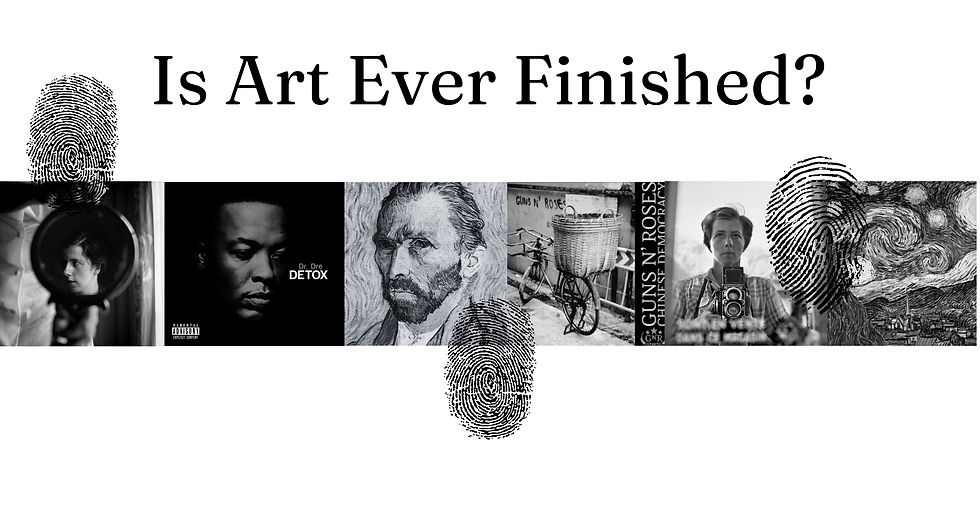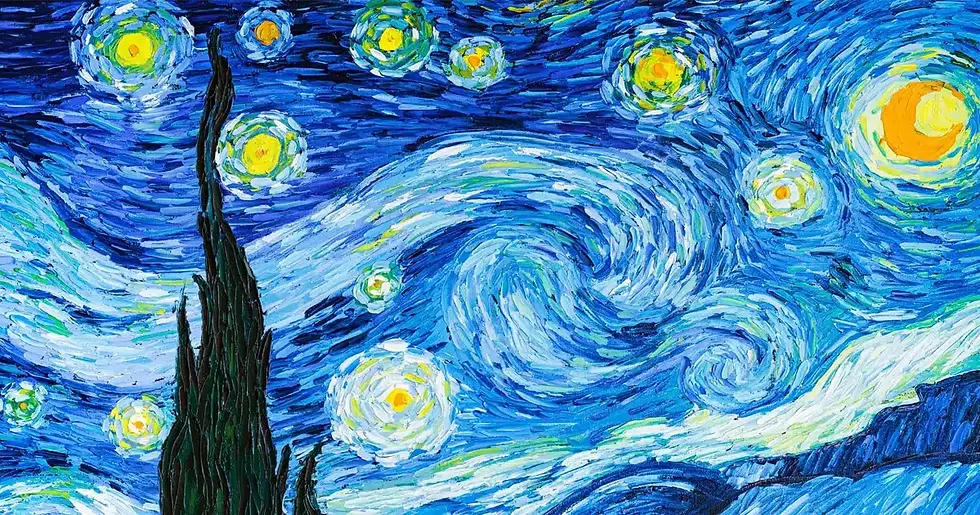The Art of Knowing When to Share
- Oivia Tripoli
- Dec 28, 2024
- 4 min read

Ah, the timeless struggle of a creative and not knowing when something is fully complete. The urge for perfection is the definition of a blessing and a curse. While crippling, perfection is what a lot of us pride ourselves on. But at what point does it actually end up hurting the work?
This question has been rattling around in my head lately. As creatives, our minds never truly rest. We’re constantly thinking of new ways to tweak, improve, and polish what we’ve made. Just when something feels “done,” a voice whispers, “But what if you changed this one thing?” It’s relentless.
What makes this even more complicated is that the creative struggle is timeless. Artists across generations have felt this same pressure, from painters to photographers, from musicians to writers. While perfectionism often leads to extraordinary creations, it can also be the very thing that keeps those creations from ever seeing the light of day.
The Hidden Masterpieces
Vivian Maier, the now-famous photographer, is the name that comes to mind. She spent her life working as a nanny, capturing over 150,000 photographs that she never shared. Her work, which includes some of the first-ever "mirror selfies," wasn’t discovered until after her death. The world marveled at her raw and authentic perspective on urban life.

But here’s the thing: What if Maier never shared her work because she didn’t see it as extraordinary? A lot of creative people are famous because their talent is so rare and obvious, but Maier might not have viewed herself that way. She may have thought that what she was doing with her camera was something anyone could do. Her talent came so naturally to her that it’s possible she assumed it was basic, not realizing how groundbreaking her work actually was. Her story makes me wonder: How many other masterpieces are hidden away, waiting to be discovered? How many creative minds, afraid their work isn’t “ready,” have locked away brilliance because they simply didn’t see it for what it was?
The Courage to Let Go

On the flip side, there’s something to be said for the courage it takes to say, “It’s done.” Dr. Dre’s Detox album is one of the most famous examples of perfectionism gone wild. Announced in the early 2000s, it was meant to be his magnum opus. Yet Dre’s relentless tinkering and self-doubt have kept it from ever being released. The album’s myth has only grown, but what does it say about the balance between creating something perfect and sharing it with the world?
Contrast that with Vincent van Gogh. He didn’t get the luxury of delaying his work out of perfectionism. He sold very few paintings during his lifetime and likely died believing his art didn’t matter. Yet today, his pieces like The Starry Night are among the most celebrated in the world. It makes you wonder: Does sharing your work, no matter the outcome, define success? Or does success come from the legacy your work leaves behind, even if you don’t live to see it?

Timelessness and the Creative Mind
The struggle for perfection isn’t just about the work—it’s about the mind behind it. Creatives are wired to dream big and to constantly think, “How can this be better?” That kind of thinking is what leads to innovation, but it can also delay a sense of accomplishment. By the time a piece is released, the creator may have already moved on emotionally.
This isn’t a new phenomenon. It has always been the case. From Renaissance artists to modern musicians, the battle between creation and completion is universal.
Consider Guns N’ Roses and their album Chinese Democracy, which took over a decade to make. By the time it came out, the cultural landscape had shifted, and the band’s excitement for the project had fizzled. The end result still had its moments, but was the delay worth it?
So, When Is It Done?
It’s ironic that some of the most timeless art in history was created by people who never felt it was perfect. Maier’s photographs and Van Gogh’s paintings remind us that greatness isn’t defined by polish but by authenticity.
So, where does that leave us? Do we keep tweaking until we can’t stand to look at our work anymore? Do we lock it away for fear it isn’t good enough? Or do we take a deep breath, let go, and let the world decide?
For me, this question is far from answered. But one thing I do know is that art doesn’t have to be perfect to matter. Sometimes, it just has to exist.
What do you think? Is it better to wait for perfection or to trust that the imperfections are what make something truly great?


Comments